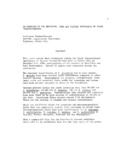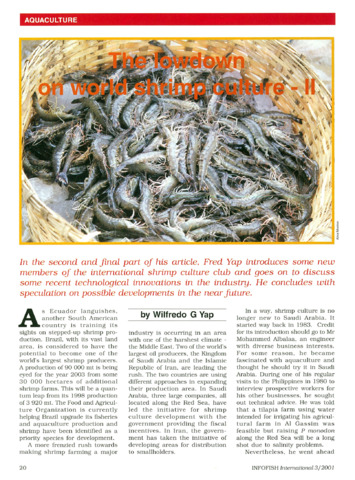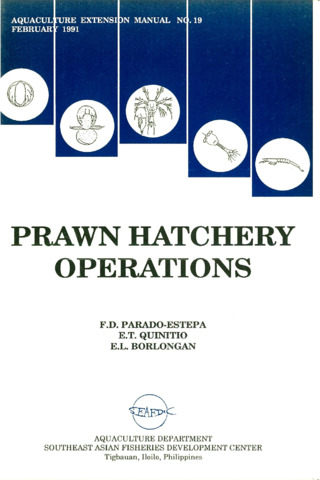| dc.contributor.author | Tendencia, Eleonor | |
| dc.contributor.author | Bosma, Roel H. | |
| dc.contributor.author | Sorio, Lynbelle Rose | |
| dc.date.accessioned | 2014-09-04T07:33:10Z | |
| dc.date.available | 2014-09-04T07:33:10Z | |
| dc.date.issued | 2012 | |
| dc.identifier.citation | Tendencia, E. A., Bosma, R. H., & Sorio, L. R. (2012). Effect of three innovative culture systems on water quality and whitespot syndrome virus (WSSV) viral load in WSSV-fed Penaeus monodon cultured in indoor tanks. Aquaculture, 350-353, 169-174. | en |
| dc.identifier.issn | 0044-8486 | |
| dc.identifier.uri | http://hdl.handle.net/10862/2128 | |
| dc.description.abstract | White spot syndrome virus is the most important among the shrimp diseases. It has been devastating the shrimp industry for more than 3 decades. Previous studies reported that greater percentage of yellow colonies on thiosulfate citrate bile salt sucrose agar (yellow vibrios) in the rearing water, abundant supply of natural food such as Chlorella, and the use of the greenwater technology (GW) are some ecological ways of preventing WSSV outbreak. The aim of this study was to investigate the efficiency of the 3 systems against WSSV.
Shrimp, experimentally infected with WSSV by feeding with WSSV positive shrimp carcass, was cultured in tanks using three treatments: with tilapia to simulate the GW, seeded with Chlorella, and with molasses added to enhance growth of yellow vibrios. Shrimp cultured in seawater served as the control. Survival was recorded and shrimp were analyzed for WSSV quantification using qPCR upon termination.
Analysis showed no significant differences in shrimp survival at 120 h post infection in all treatments and the control. However, from the original viral load of 1.40 × 101 WSSV/mg sample, WSSV decreased and was significantly lowest in shrimp cultured using GW (7.0 × 100), compared to the control (4.82 × 105) and the other treatments (3.66 × 105 for molasses added and 4.64 × 105 for Chlorella seeded) in which viral load increased 4–5 times. Shrimp survival was highest in Chlorella seeded treatment and lowest in GW. Nitrogenous waste concentrations were lowest in molasses added water and highest in GW.
Results suggest that the GW culture technology provides protection against WSSV while addition of molasses lowers nitrogenous waste concentration. The use of GW in combination with the addition of molasses for shrimp culture is suggested. | en |
| dc.description.sponsorship | The study was funded by the Government of Japan under the trust fund granted to SEAFDEC AQD (GoJ TFD FH0710) and by RESCOPAR funded by INREF of the Aquaculture Center, Wageningen University. Gratitude is due to SEAFDEC's Marine Finfish Hatchery Staff for the Chlorella cultures, to Mr. Deogracias Reyes and Dr. Rowena Eguia for the O. mossambicus. | en |
| dc.language.iso | en | en |
| dc.publisher | Elsevier | en |
| dc.subject | Chlorella | en |
| dc.subject | Greenwater | en |
| dc.subject | molasses | en |
| dc.subject | Penaeus monodon | en |
| dc.title | Effect of three innovative culture systems on water quality and whitespot syndrome virus (WSSV) viral load in WSSV-fed Penaeus monodon cultured in indoor tanks | en |
| dc.type | Article | en |
| dc.citation.volume | 350-353 | |
| dc.citation.spage | 169 | |
| dc.citation.epage | 174 | |
| dc.citation.journalTitle | Aquaculture | en |
| dc.subject.asfa | White spot syndrome virus | en |
| dc.identifier.doi | 10.1016/j.aquaculture.2012.04.001 | |
| dc.subject.scientificName | Penaeus monodon | en |



